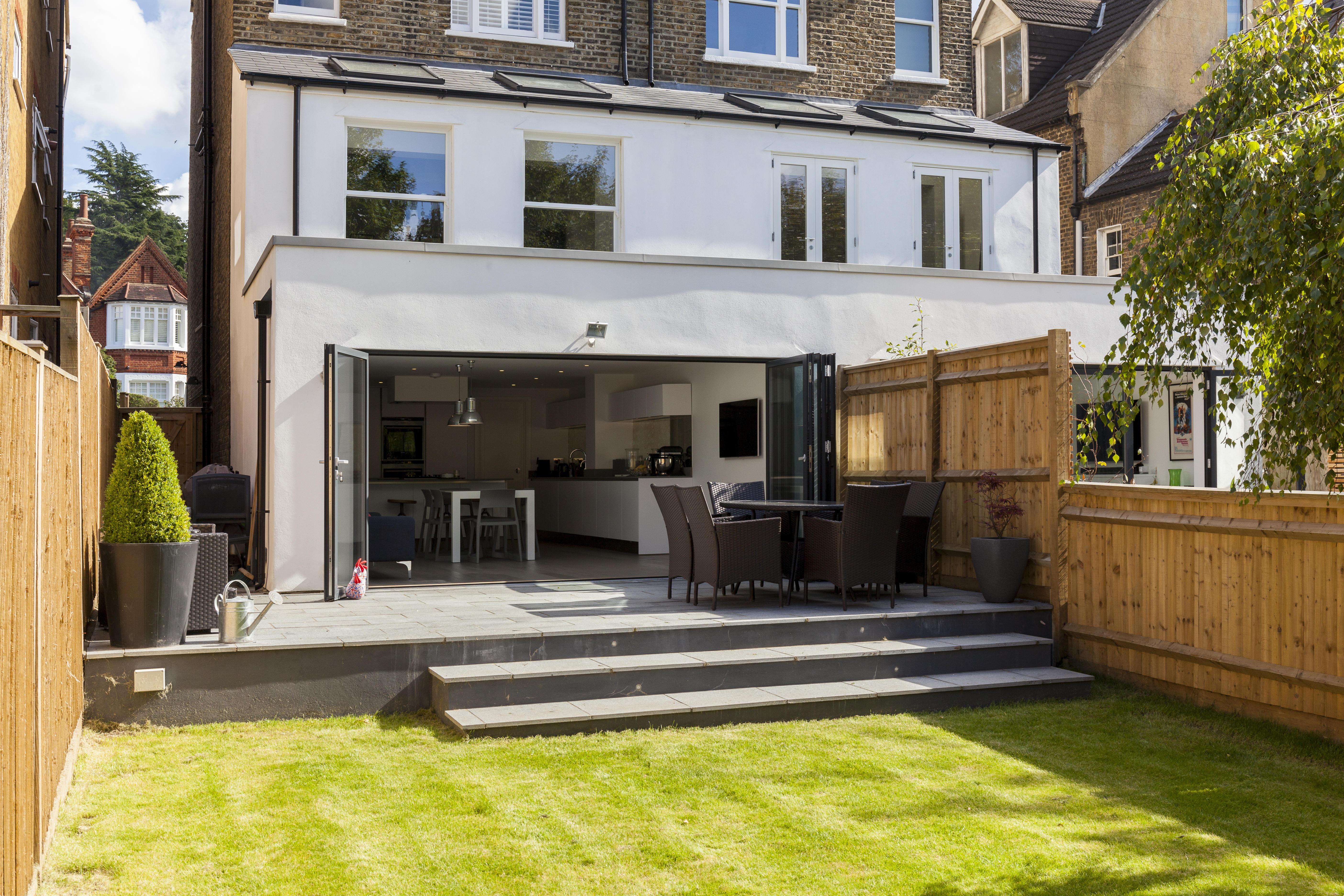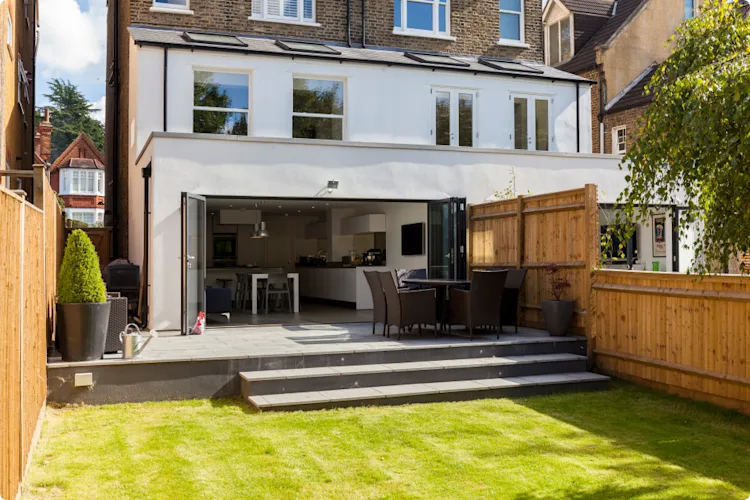Neighbours can get a bad reputation in the home extension game. You hear classic horror stories about the nightmare family next door, of vicious party wall agreements and monstrous extensions. But neighbours don’t have to be nightmares, sometimes they can be just what your home needs.
In this article, we’ll be looking at what happens when neighbours work together to extend their homes at the same time. Not only will this help bring you two closer together, but you’ll also find a range of benefits for both your home and bank account!
Here’s what you need to know...
What does it mean to extend together?
Doing a joint project means two sets of homeowners pair up to create something that benefits both homes. Commonly this is a rear extension, as the structure is easy to bring across both properties, but could also be a side return or even a loft conversion.
While teaming up does mean having to work closely with your neighbour, doing so has a range of benefits. These might be…
- Splitting the cost of the professionals required
- Increased chance of planning success
- Eliminating party wall concerns
- And material savings when bought in bulk
Of course, there are downsides too, namely, you’ll have less creative freedom and it might be trickier to find professionals who’ll work across the properties. However, you’ll also have double the manpower on your end, so with some good organisation skills, these are problems that can be easily overcome.
Planning permission
One of the main benefits of doing a joint venture is the problems it eliminates during the planning permission stage.
While planning permission is in part concerned with the overall look of your home, it also has a lot of rules around how your home interacts with your neighbours.
- Overshadowing
- Loss of privacy
These two common reasons for planning refusal are both linked to how your extension affects next door. By working with your neighbours you eliminate these concerns (providing you’re not in a terrace). Also, by having an extension / conversion that compliments or matches the one beside you, you’re creating a continuous aesthetic, which can also be a positive.
However, you should also be aware that planning can be subjective. While some planning officers will see a blended extension between properties, others might view the project as overdevelopment. What’s more, your planning officer (as a condition) may ask you and your neighbour to sign a document legally binding you to build together. This is important because it means both households will need to have finance in place at the same time.
Worried? Don’t be, to avoid any nasty planning surprises, you can have an architect manage your application. This takes away a lot of the uncertainty, as a good architect will likely already have a relationship with your local authority.
As for finance, did you know there are home improvements loan specialists? We should know, we’re one of them! Learn more about getting the right finance in place here.

Building regulations
Another benefit of working together is when it comes to professionals. Many in the industry (including architects) price their services by the hour. So rather than paying twice for your extension, you’ll likely save money as a joint venture takes less time to complete than two separate projects.
This is very important when it comes to a stage like building regulations, where you’ll need a range of experts on board. This will typically include…
- An architect
- A structural engineer
- CCTV surveyor
- An approved inspector
- And a party wall surveyor
All these professionals together on average cost £2000 - £4000 on smaller projects, and £3000 - £5000 for larger. However, for you and your neighbour, you could see savings of thousands, depending on the size of your build.
Learn more about building regulations.
Another way you’ll likely save money is with your party wall matters. Unless you have another neighbour affected by your project, you won’t need to get a party wall agreement in place. This not only saves you from hiring a party wall surveyor, but it also removes the risks of a party wall dispute occurring. These legal battles can often take up to 3 months to resolve, so you can rest a little easier knowing it won’t be an issue.
Learn more about party wall matters.
Construction
Construction is another time when working together really pays off.
Rather than doing two separate projects, which would require disruption to the neighbourhood for twice the amount of time, now everything can be handled in one go. This not only means you’ll likely get a better price for your projects, but your other neighbours will thank you for being as efficient with your timings as possible.
And that’s not the only way a joint venture is efficient. By getting your neighbour on board, you're offering greater space for your contractor to work within. Meaning more options when it comes to both waste disposal, transport of materials, and more space for a port-a-loo.
However, there is one downside to this construction method. Because you'll be doing a larger build together, construction will likely take longer than just a single extension. This means you could be left paying more in rent, if you need to live elsewhere during this time.
Tips for keeping good neighbourly relations
So, you and your neighbour are sold but how to go about a joint venture? More importantly, how do you stop it becoming more feud than a partnership?
Here’s some top tips from our designers…
Be clear with each other from the start. In order to go ahead, you’ll need similar budgets and need to be on the same page about costs. Talk to an architect beforehand to get an idea of possible budget requirements, and discuss the finance options you’ll be using.
Create a Pinterest board and be open about your tastes. Fittings and glazing can be personal, but the general structure of the extension will need you to find a middle ground in taste.
Worried one person is going to do more work than the other? Get a project manager involved. They can handle looking over both the tendering and construction side of your project and save you both from headaches.
Want to learn more about joint extensions? Book a free consultation with our team. We offer expert advice to all homeowners and our team already has experience handling these project types - meaning you’re in safe hands with us!


























